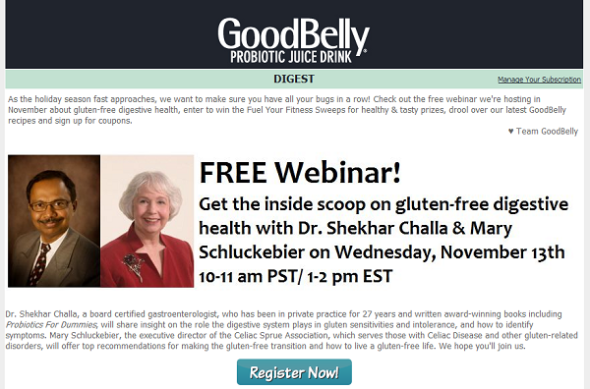Join us for a FREE webinar Nov. 13th: The “Inside” Scoop on Gluten-Free #Digestive Health Featuring Dr. Shekhar Challa, board certified gastroenterologist and author of Probiotics For Dummies, and Mary Schluckebier, executive director, Celiac Sprue Association – hosted by GoodBelly Probiotics.
Unless you’re like the proverbial ostrich, you’ve heard all about gluten intolerance and celiac disease. But did you know the conditions are still commonly misdiagnosed because the symptoms can be so varied? An estimated 1.5 to 3 million Americans have celiac disease or other forms of wheat intolerance. Join us for a complimentary webinar giving you the “inside” scoop on gluten intolerance and the importance of having a strong gut! Pun intended : )
Our featured rock star experts include:
- Dr. Shekhar Challa – board certified gastroenterologist, will share insight on the role the digestive system plays in gluten sensitivities and intolerance, and how to identify symptoms.
- Mary Schluckebier – executive director of the Celiac Sprue Association, will also offer top recommendations for making the gluten-free transition, and how to live a gluten-free life.
As a webinar attendee, you will learn:
- Symptoms of gluten intolerance and celiac disease
- Treatment, tips and resources for a gluten-free lifestyle
- The importance of digestive health for those living gluten-free
We hope you’ll join us!
Register here: http://bit.ly/187mUak




